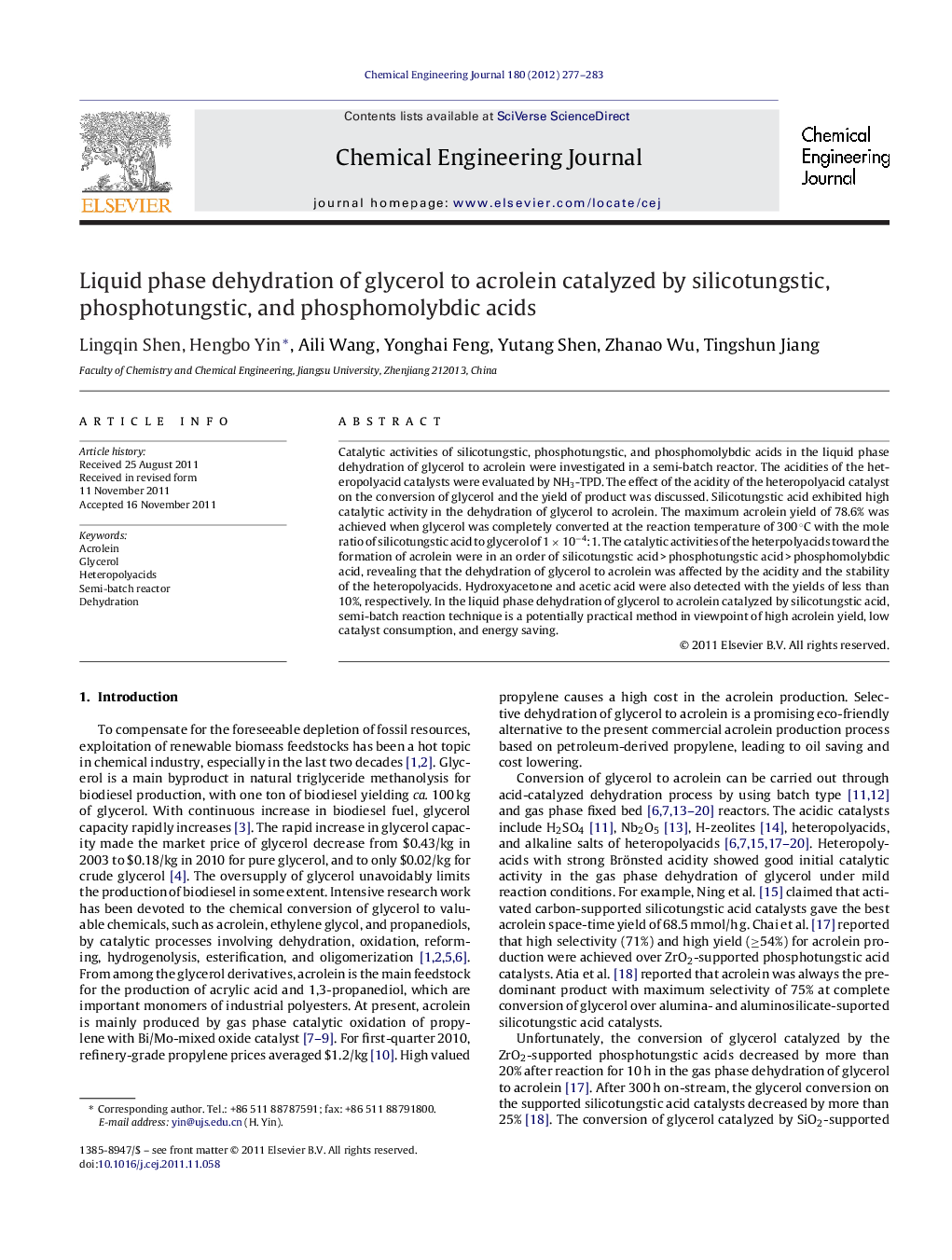| Article ID | Journal | Published Year | Pages | File Type |
|---|---|---|---|---|
| 150377 | Chemical Engineering Journal | 2012 | 7 Pages |
Catalytic activities of silicotungstic, phosphotungstic, and phosphomolybdic acids in the liquid phase dehydration of glycerol to acrolein were investigated in a semi-batch reactor. The acidities of the heteropolyacid catalysts were evaluated by NH3-TPD. The effect of the acidity of the heteropolyacid catalyst on the conversion of glycerol and the yield of product was discussed. Silicotungstic acid exhibited high catalytic activity in the dehydration of glycerol to acrolein. The maximum acrolein yield of 78.6% was achieved when glycerol was completely converted at the reaction temperature of 300 °C with the mole ratio of silicotungstic acid to glycerol of 1 × 10−4:1. The catalytic activities of the heterpolyacids toward the formation of acrolein were in an order of silicotungstic acid > phosphotungstic acid > phosphomolybdic acid, revealing that the dehydration of glycerol to acrolein was affected by the acidity and the stability of the heteropolyacids. Hydroxyacetone and acetic acid were also detected with the yields of less than 10%, respectively. In the liquid phase dehydration of glycerol to acrolein catalyzed by silicotungstic acid, semi-batch reaction technique is a potentially practical method in viewpoint of high acrolein yield, low catalyst consumption, and energy saving.
Graphical abstractFigure optionsDownload full-size imageDownload as PowerPoint slideHighlights► Dehydration of glycerol to acrolein was effectively catalyzed by heteropolyacids. ► Silicotungstic acid showed high catalytic activity toward the formation of acrolein. ► The effect of acidity on the glycerol conversion and the product yield was discussed. ► Semi-batch reaction technique is suitable for dehydration of glycerol to acrolein.
